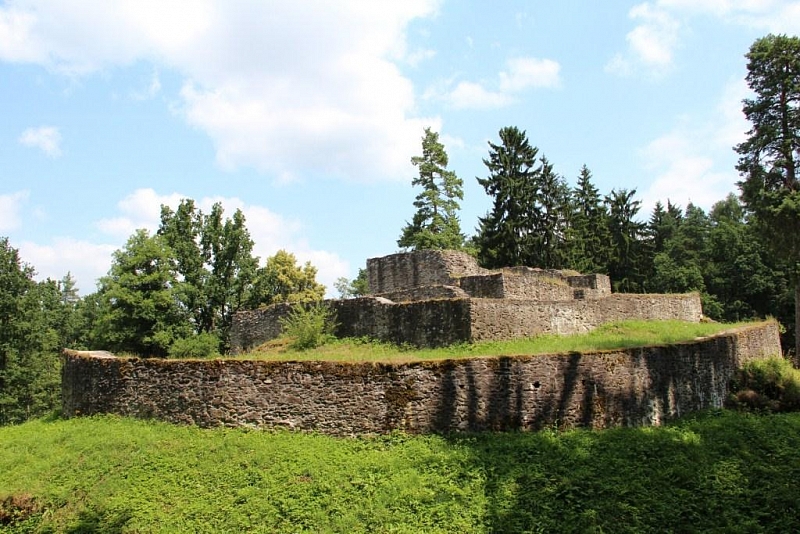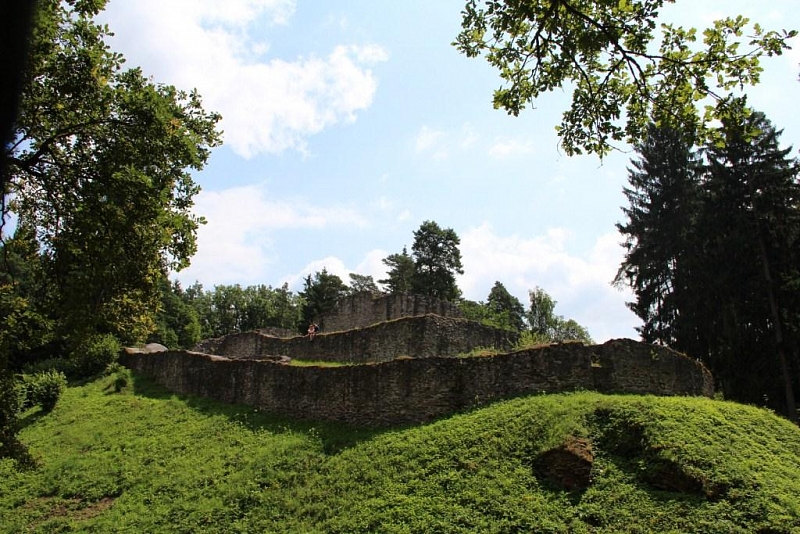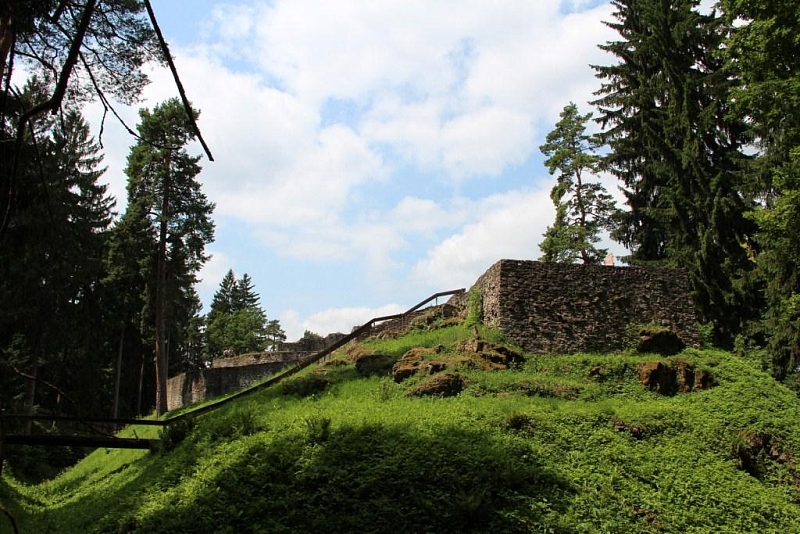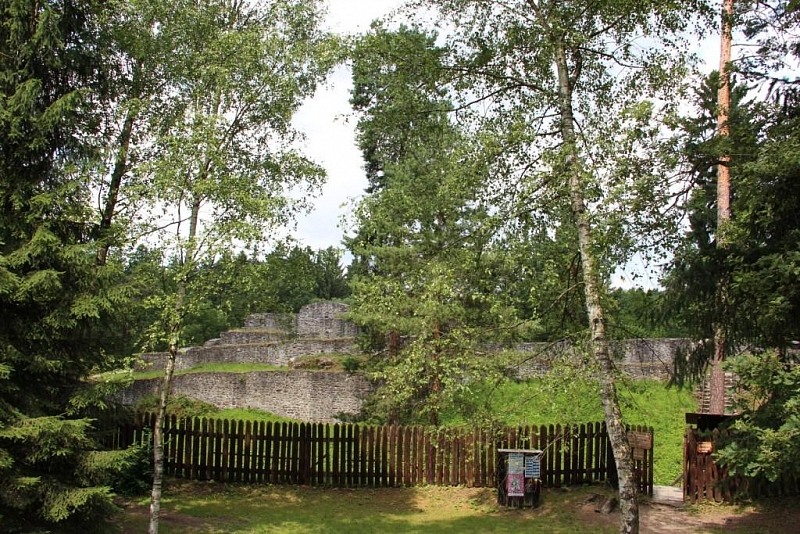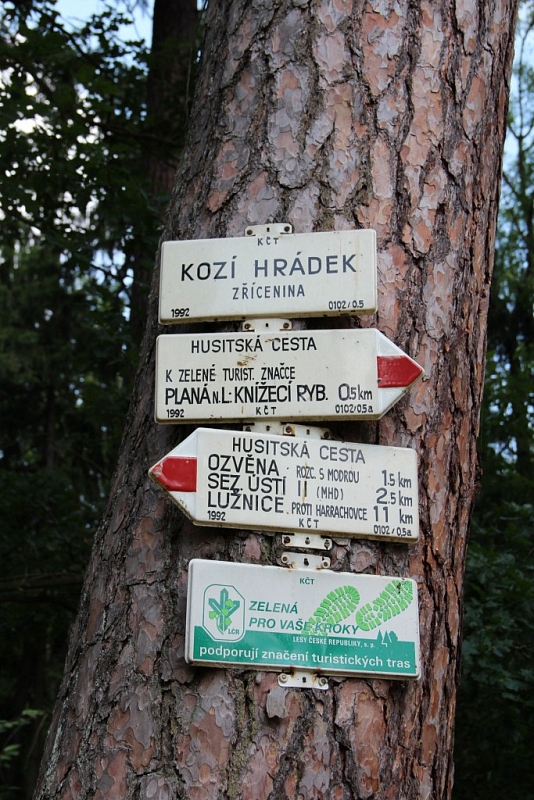Kozí Hrádek (ruins)
Visit with us an important place in our history, a place from which Master Jan Hus spread his message, a place where important literary works were created. A place where times long past you breathe on you - the ruins of Kozí Hrádek.
Information for visitors
Interesting facts Kozí Hrádek (ruins)
The Gothic Donjon-type castle stood on a low promontory on the left bank of the Kozský brook. The first mention of it comes around the year 1377, when it was owned by Vlček z Kozího. Hrádek is famous especially for the stay of Master Jan Hus, who devoted himself to preaching here in the years 1412 - 1414. Hus completed Postil here and wrote some other important works, such as the treatise On the Holiness or the work On the Six Misconceptions. In 1438, the castle was burned down and destroyed by the mercenary army of Albrecht of Austria. It was easy prey, the castle was not built in a very safe place. Since then, it has been abandoned until it began to be used as a source of building material not only for nearby Měšice. In the first half of the 20th century, it was professionally researched and preserved. In 1962 it was declared a National Cultural Monument and since 1991 it has been the property of the town of Sezimovo Ústí.
Of the original building, the perimeter walls of the palace, which formed the core of the castle, have been preserved. A moat was dug around the castle, which reached a width of up to 20 m. It was crossed over a wooden bridge, topped by a drawbridge that led to the entrance tower. The castle included a farm building with two rooms, a square residential tower, a brewery and stables. There used to be an 18 m deep well and cellar rooms carved into the rock. The fortifications of the castle were complemented by a clay rampart and massive wooden palisades.
In nearby Tábor you can look at a complex of underground spaces and corridors. This monument was created until the 15th century by digging cellars, called "lochy", under individual houses in the historic part of Tábor.
The dominant feature of the Měšice district is the Baroque chateau, standing on the site of a Renaissance fortress from 1545. The chateau has been reconstructed and is open to the public.
Author: Marie Bukovinská
